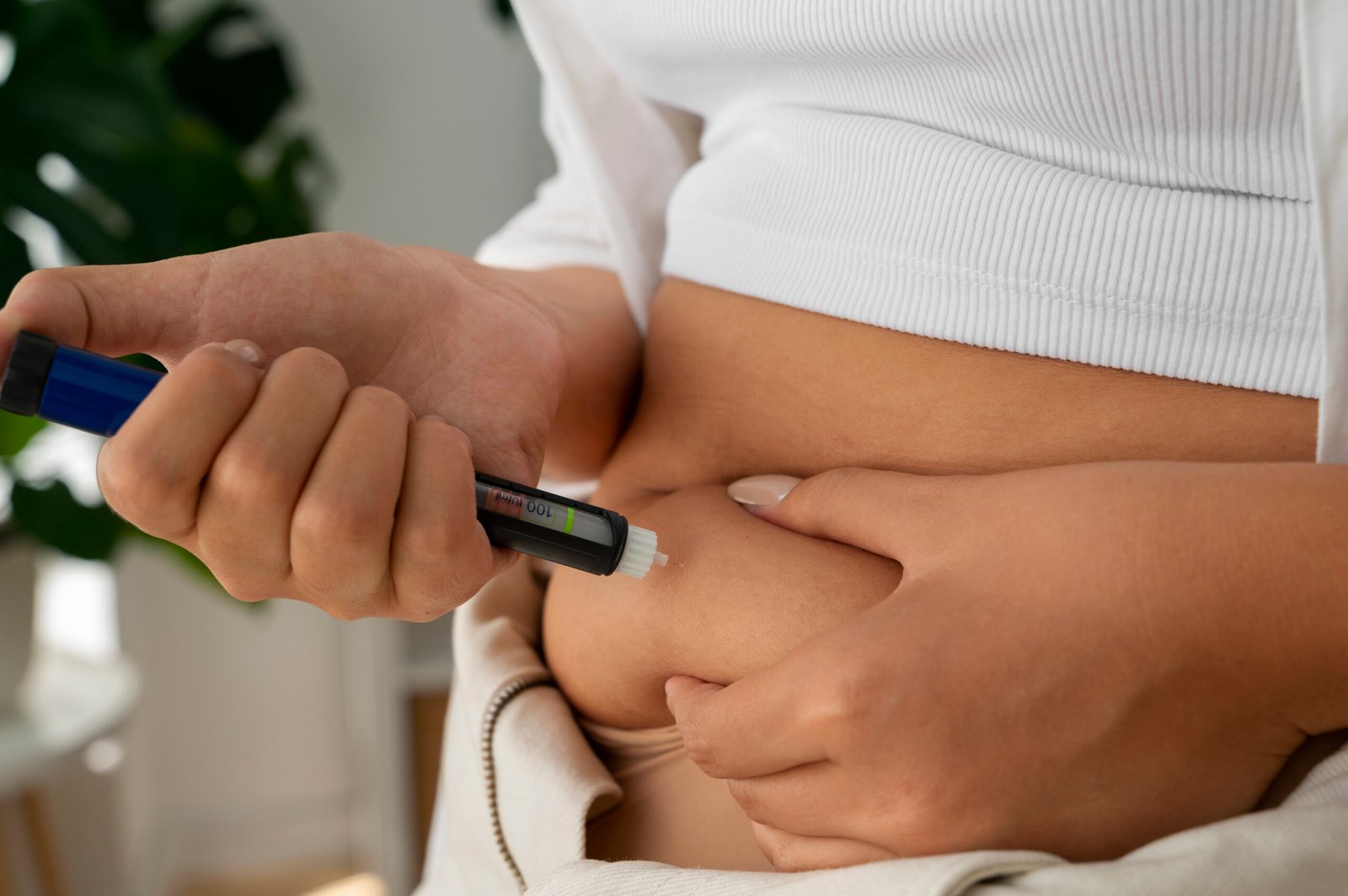
Lipedema And Diabetes
Avinav
February 14, 2025

Lipedema and diabetes are two distinct medical conditions, but they can be interconnected, especially in terms of their impact on overall health and their potential to exacerbate each other.
Lipedema And Diabetes
An Overview regarding Lipedema
Lipedema is a chronic disorder characterized by the abnormal accumulation of fat, typically in the legs, hips, buttocks, and sometimes arms. It disproportionately affects women.
Symptoms generally seen are:
- Pain, tenderness, or discomfort in affected areas
- Easy bruising
- Fat that does not respond to diet or exercise
- Swelling that worsens throughout the day
The exact cause of lipedema is unknown, but is believed to have a genetic and hormonal component, often triggered by puberty, pregnancy, or menopause or stress.
An Overview regarding Diabetes
Diabetes is a chronic condition characterized by elevated blood sugar levels due to inadequate insulin production (Type 1) or insulin resistance (Type 2).
Commonly seen Symptoms of diabetes are:
- Increased thirst and urination
- Fatigue
- Blurred vision
- Slow-healing sores
Risk Factors linked to diabetes: Obesity, sedentary lifestyle, genetics, and poor diet are major contributors, particularly for Type 2 diabetes.
- Lipedema And Diabetes
- Symptoms Of Lipedema
- Symptoms Of Diabetes
- Connection Between Lipedema And Diabetes
- Medical Inventions
- Management Strategies For Both
Lipedema And Diabetes
Connection Between Lipedema and Diabetes
Impact of Obesity:
Lipedema often leads to significant fat accumulation, which can contribute to obesity, a major risk factor for Type 2 diabetes.
Unlike typical obesity, lipedema fat does not typically respond to traditional weight-loss methods like diet and exercise, making it harder to manage associated risks.
Both obesity and lipedema are associated with chronic inflammation. Lipedema causes inflammation in fat tissue, which can lead to metabolic dysregulation and increase the risk of insulin resistance.
Physical Inactivity: The pain and discomfort caused by lipedema may reduce physical activity levels, further increasing the risk of Type 2 diabetes.
Cardiovascular and Metabolic Risks: People with lipedema often develop secondary lymphedema (lipolymphedema), which, along with diabetes, can lead to compounded cardiovascular risks and complications
Management Strategies for Both Conditions
Healthy Diet: Focus on anti-inflammatory and low-glycemic foods to help manage blood sugar and reduce inflammation.
Avoid processed foods, refined sugars, and trans fats.
Exercise: Low-impact activities like swimming, cycling, or walking can help improve mobility and blood sugar regulation while being gentle on the affected areas.
Compression Therapy: For lipedema, compression garments can help reduce swelling and improve lymphatic flow.
Medical Interventions:
Lipedema: Treatments may include manual lymphatic drainage, liposuction, and other therapies to reduce fat and improve quality of life.
Diabetes: Medications like metformin or insulin may be necessary to control blood sugar levels.
Monitoring and Regular Checkups: Regular screening for blood sugar levels and monitoring of lipedema symptoms can help in early detection and management of complications.
Psychological Support: Both conditions can affect mental health, leading to anxiety or depression. Support groups and counseling can be beneficial.
Collaboration between specialists, such as endocrinologists, vascular surgeons, and physical therapists, is essential for effective management of lipedema and diabetes. Early intervention and tailored care plans can significantly improve quality of life
To connect with us click on the button below
To know more fill in the details below:
Recent Posts
Have Any Question?
Lipedema is a condition that causes excess fat to accumulate in the lower part of the body.
- +919515106591
- srinageshlipedema@gmail.com



